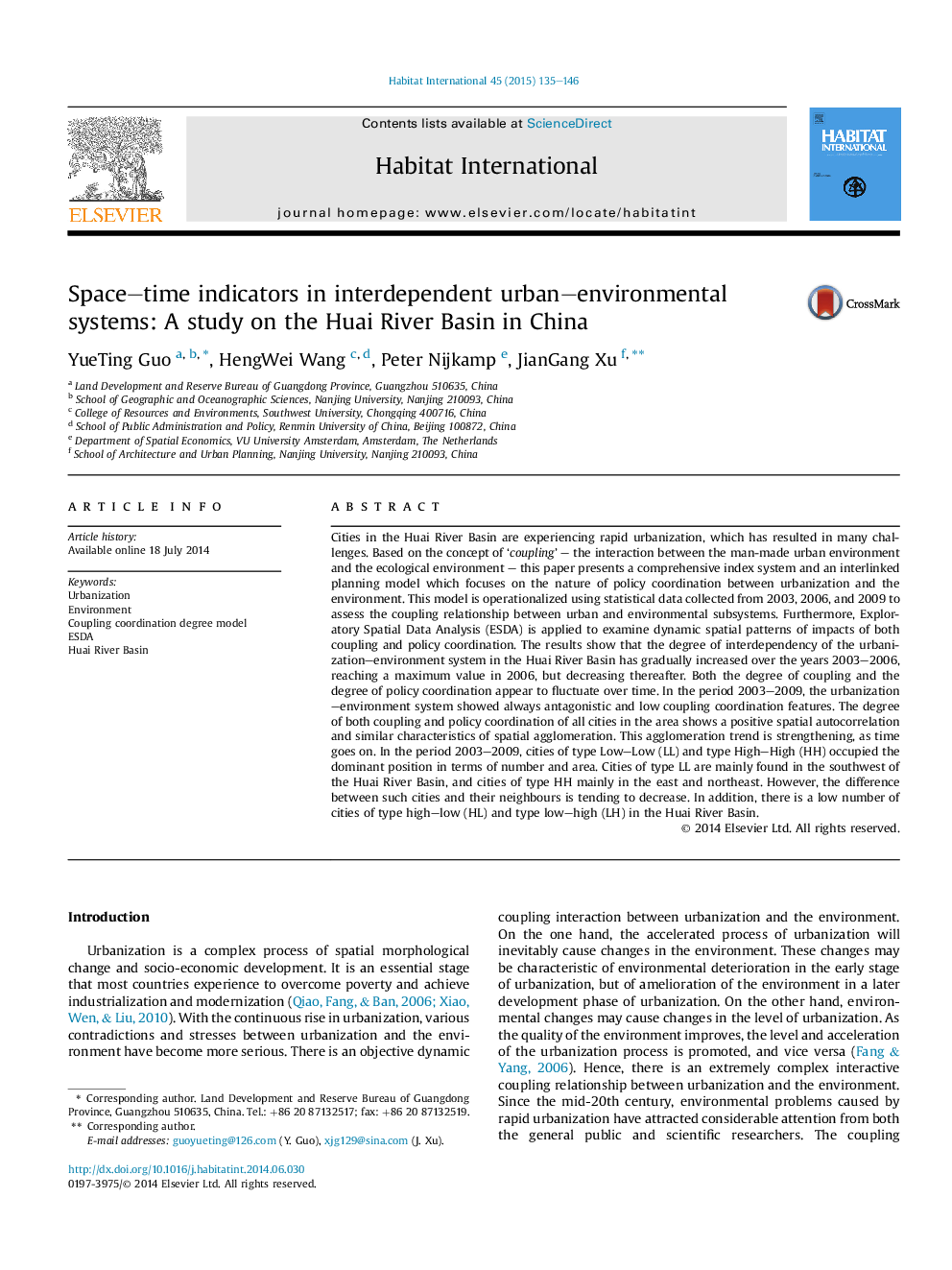| کد مقاله | کد نشریه | سال انتشار | مقاله انگلیسی | نسخه تمام متن |
|---|---|---|---|---|
| 1047740 | 945308 | 2015 | 12 صفحه PDF | دانلود رایگان |
• Coupling relationship between urbanization and environment is examined from exploratory and analytical perspectives.
• The coupling coordination degree model is adopted to quantify the degree of coupling and the degree of policy coordination.
• Exploratory Spatial Data Analysis is applied to visualize spatial patterns in the Huai River Basin.
• Both the degree of coupling and the degree of policy coordination fluctuate along with time.
Cities in the Huai River Basin are experiencing rapid urbanization, which has resulted in many challenges. Based on the concept of ‘coupling’ – the interaction between the man-made urban environment and the ecological environment – this paper presents a comprehensive index system and an interlinked planning model which focuses on the nature of policy coordination between urbanization and the environment. This model is operationalized using statistical data collected from 2003, 2006, and 2009 to assess the coupling relationship between urban and environmental subsystems. Furthermore, Exploratory Spatial Data Analysis (ESDA) is applied to examine dynamic spatial patterns of impacts of both coupling and policy coordination. The results show that the degree of interdependency of the urbanization–environment system in the Huai River Basin has gradually increased over the years 2003–2006, reaching a maximum value in 2006, but decreasing thereafter. Both the degree of coupling and the degree of policy coordination appear to fluctuate over time. In the period 2003–2009, the urbanization–environment system showed always antagonistic and low coupling coordination features. The degree of both coupling and policy coordination of all cities in the area shows a positive spatial autocorrelation and similar characteristics of spatial agglomeration. This agglomeration trend is strengthening, as time goes on. In the period 2003–2009, cities of type Low–Low (LL) and type High–High (HH) occupied the dominant position in terms of number and area. Cities of type LL are mainly found in the southwest of the Huai River Basin, and cities of type HH mainly in the east and northeast. However, the difference between such cities and their neighbours is tending to decrease. In addition, there is a low number of cities of type high–low (HL) and type low–high (LH) in the Huai River Basin.
Journal: Habitat International - Volume 45, Part 2, January 2015, Pages 135–146
